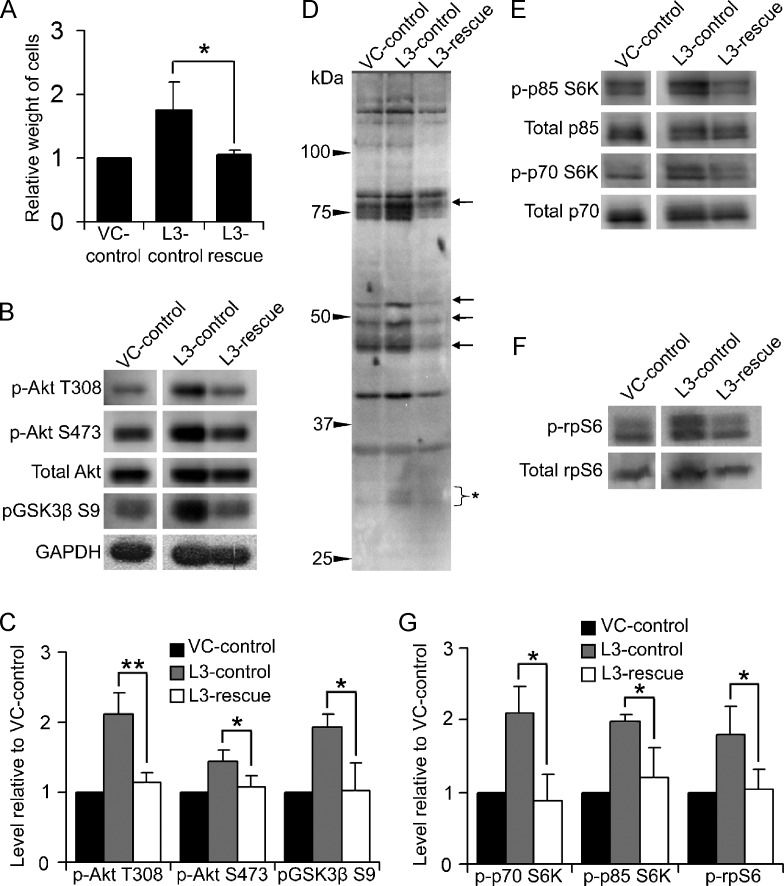Figure 6.
Effects of LCMT-1 knockdown on biochemical signaling are rescued by reexpression of LCMT-1. (A) Normalization of anchorage-independent growth by LCMT-1 reexpression. Anchorage-independent growth of VC-control, L3-control, and L3-rescue cells (defined in Figure 5A) were assessed as in Figure 4A by weighing cells after 1 week in suspension culture. Data are presented as fold-change relative to VC. (B, C, and D) Normalization of Akt signaling by LCMT-1 reexpression. (B) Lysates from VC-control, L3-control, and L3-rescue suspension cells were analyzed by Western blot analysis for changes in activation of Akt. GAPDH and total Akt were used as loading controls. (C) Graph depicts the average fold change in the levels of phospho-Akt T308, phospho-Akt S473, and phospho-GSK3β S9 in three immunoblot experiments relative to VC-control. (D) Akt phospho-substrate antibody was used to probe lysates from the VC-control, L3-control, and L3-rescue lines. Arrows indicate some proteins whose phosphorylation increased on L3 knockdown but returned to control levels on reexpression of LCMT-1. Bracket indicates phospho-rpS6. (E and F) Rescue of S6K activation and rpS6 phosphorylation by LCMT-1 reexpression. Lysates were probed for changes in the activation state of p70 and p85 S6K and rpS6 phosphorylation. Total p70 and p85 S6K and total rpS6 were used as loading controls. (G) Graph represents average fold change in the levels of phospho-p85, phospho-p70, and phosphorpS6 in three immunoblot experiments relative to VC-control. Error bars in all panels represent SD of three independent experiments. *P ≤ .05. **P ≤ .01.

